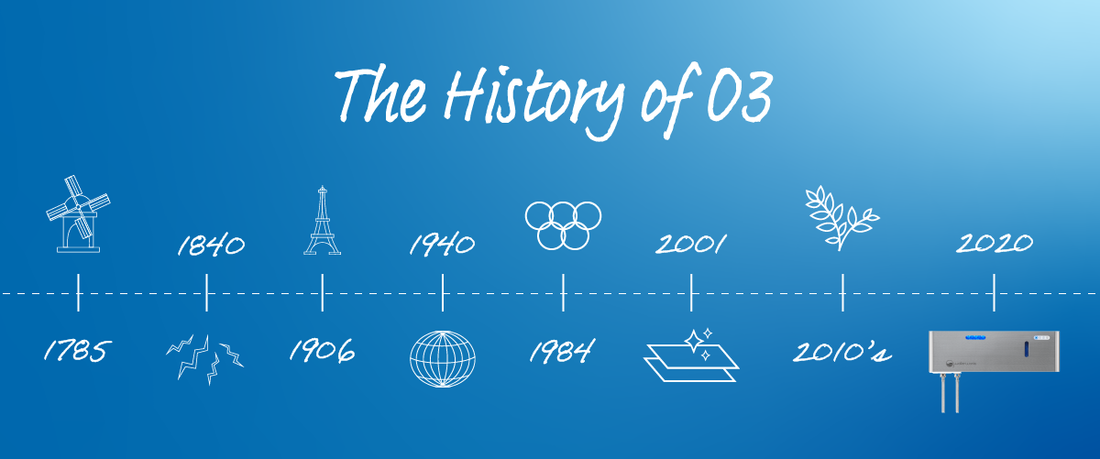
Over the last few hundred years, O3 has become utilized in global systems as a non-toxic solution for purifying pools, water sources and more. Below is a timeline from its first discovery to today, where we have made the power of O3 available to the everyday consumer.
1785 - The first known lab-created O3 is discovered by a Dutch chemist. [1]
1840 - Several scientists discover that O3 is also created in nature by recognizing the smell when water is sparked with electricity. [1]
1906 - In France, the first ever water purification plant utilizing O3 is built. The first plant was constructed in Nice, where some call it the birthplace of O3 for drinking water. [1]
1940 - The water treatment industry uses O3 worldwide. It is also widely used in the United States on food to prevent mold or yeast growth. [2]
1984 - In Los Angeles, O3 is used in the Olympic Games to clean the Olympic swimming pools. It became more widely used after this in swimming pools over chlorine. Chlorine can have dangerous side effects because it produces a byproduct called chloramines. Chloramines can get into the lungs and cause skin allergies. O3 leaves no residual residues and causes no lung or skin irritations. [3]
2001 - After a 1996 ruling allowing aqueous ozone in food prep facilities, the FDA rules that its safe to use for food-contact surfaces. It gained GRAS status in 1997 and has been used widely as an antimicrobial additive for direct contact on foods. [4]
2010’s - Hotels and hospitals start utilizing O3 as cleaning agents because of its non impact on the user and environment. With its ability to work as a cleaning agent that turns back into water after 20 minutes, it also saves money on cleaning supplies since it can be utilized over and over with just the addition of tap water. [5]
2020 - O3waterworks develops the Smart Laundry System and the Sanitizing Spray Bottle to bring home the power of O3 to single family homes.
Sources:
[1] “History of ozone.” Lenntech.
[2] “Aqueous Ozone: From Cleaning to Sustainability.” Food & Safety Magazine. February 13, 2017.
[3] “How is Aqueous Ozone used in Olympic swimming pools?” Purozo. August 16th, 2019.
[4] Hamid, Nazimah & Tiwari, Brijesh K. “Ozone Treatments for Preserving Fresh Vegetables Quality: A Critical Review.”
[5] Patil, Asmita & Talaulikar, Ashwini. “Aqueous ozone technology - A new revolution for sustainability in hotel industry.” International Science and Technology Journal. 2018.



